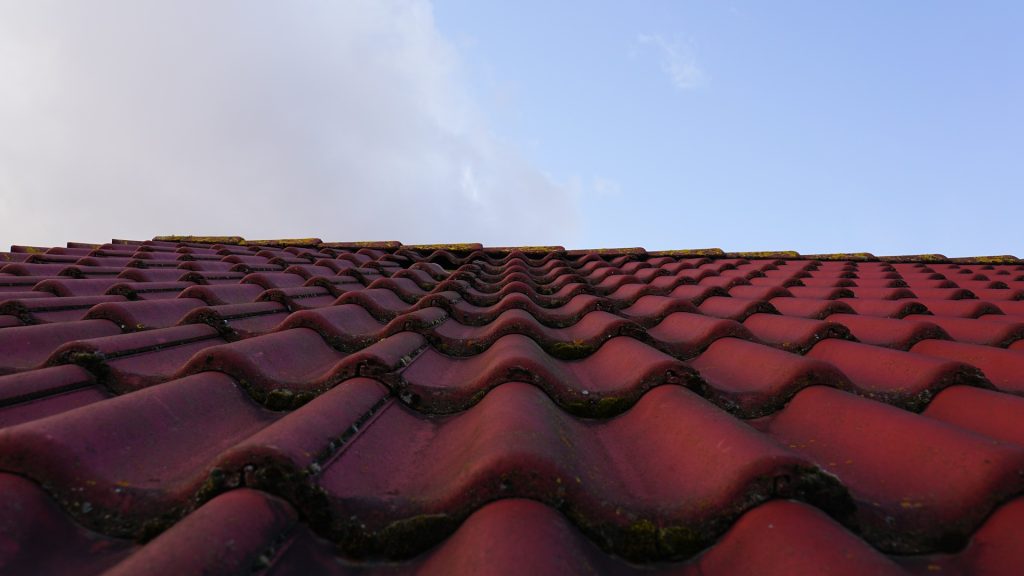Spotting wind damage to roof structures can sometimes be tricky, especially if the roof is complex. Unfortunately, the roof damages can worsen if not detected and repaired early. So, how can you tell that high winds have damaged your roofing structures?
Strong winds can cause various roofing problems, including leaks, gutter issues, and missing shingles. That’s why you need to inspect your roof after stormy winds to ensure your roof is in perfect condition. Thankfully, a roof inspector can help you do that.
The most susceptible roofing material to wind damage is shingles, as they might get damaged by winds moving at a speed of 50 mph and above. So, consider inspecting your roof more often if it has shingles. High winds can easily carry them away.
This wind damage roof inspection guide explores how high winds can cause damage to your roof and how to spot the wind damages. You will also learn what you need to do when you notice the damages, whether to repair yourself or hire an emergency roofer.
That said, let’s get started!
Signs of Wind Damage to Roof Structures
The roof is one of the most vulnerable parts of a home due to high winds. During storms, strong winds can break tree branches and uproot trees, which may fall on the roof and damage it. Wind can also blow off loose shingles, compromising your roof’s structural integrity.
So, how do you tell that wind has damaged your roofing structure? The following signs will help you identify roof wind damage.
- Curling Shingles
Roof shingles tend to curl as they age. However, if you notice the shingles curling before their lifespan elapses, it could be a sign of wind damage. The shingles usually curl around the roof’s ridges, corners, edges, or around the chimneys. Unfortunately, curled shingles allow water to seep through the roof during rain, causing more damage.
- Missing Shingles
Another common sign of wind damage to the roof is missing shingles. You’ll know that your shingles are missing when you see some patches on the rooftop. If you discover a few shingles around your house or in the yard, you may have to call a professional to inspect the roof to confirm the cause of the problem, which could be high winds.
- Lifting Shingles
When the nails holding the shingles loosen, you’ll see the shingles lifting during strong winds. The sealant between the shingle layers will break, allowing rainwater to seep into the house. As the high winds blow over the roof, the nails pull off the roof, creating loose shingles. Unfortunately, lifting shingles are always hard to notice unless you watch the roof as the wind blows.
- Leaking Roof
Roof leaks after high winds are a sign of wind damage, and it’s the easiest way to spot roof wind damage. You have to go inside the house and check if water is leaking through the ceiling. If you notice wet spots, peeling paint, or discoloration on the ceiling, these are signs of roof leaks. So, get an expert to help you fix the problem correctly.
- Shingle Granules in Gutters
When heavy rains accompany high winds, the rainwater may wash away the shingle granules and deposit them in the gutters. Check if there are many granules in the gutter. If the granules are unusually high, you might need to contact a roofing contractor to inspect the roof further. Replace the damaged shingles to maintain your roof’s integrity.
- Damaged Chimney Flashing
High winds can lift the chimney flashing and other flashing around skylights. That’s because winds hit the flashing directly and perpendicularly. As a result, the flashing will split or go missing. If you notice the flashing split or missing, it is vital to fix it. Otherwise, water will leak through the openings and damage your items.
- Damaged Fascias and Soffits
High winds can also damage your roof’s soffit and fascia. Since these roof elements play a significant role in keeping water off the roof, your roof will leak when they get compromised. The soffits and fascias can crack, bend, or loosen when the winds are high, affecting your roof’s structural integrity.
How Various Wind Speeds Can Damage Your Roof
The extent of roof damage tends to vary depending on the wind speed. If the wind speed is high, it poses more risks to your roof.
Here is how different wind speeds can affect your roofing.
45 -57 Miles Per Hour
A wind speed of 45 miles per hour can cause slight roof damage. Wind speeds within this range are non-severe and may only break small tree branches and damage loose shingles on the roof. So, the loose shingles might get detached from the roof.
58 – 74 Miles Per Hour
At this range, the wind speed tends to be severe and can damage your landscaping and structures in the yard. Such winds can uproot trees and remove shingles from your roof. It can also damage the chimney flashings.
75 – 89 Miles Per Hour
Winds at this speed can flip mobile homes, uproot big trees, and cause extensive roof damage to residential and commercial buildings. Such damages are critical and require urgent intervention by expert roofers. Otherwise, the problems can worsen.
What to Do Immediately After High Winds
High winds are uncontrollable forces that can cause significant damage. So, consider doing the following after strong winds in your region.
- Step 1: Examine the roof from outside to see if there are damages
- Step 2: Clean up all the debris in your yard and the roof
- Step 3: Check for leaks inside the house by inspecting the ceiling
- Step 4: Hire a roofing contractor to inspect the roof further
- Step 5: File an insurance claim to get your roof repaired
Final Words
Now that you understand the devastating impacts of wind damage to roof structures, you need to prepare well. Ensure the shingles are intact on the roof to prevent high winds from blowing them away. However, if the winds cause extensive damages, hire a professional roofer, like Roof Master, to help you repair the roof quickly.Contact us today to talk to one of our professionals about your roof repair project.



